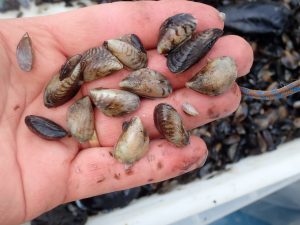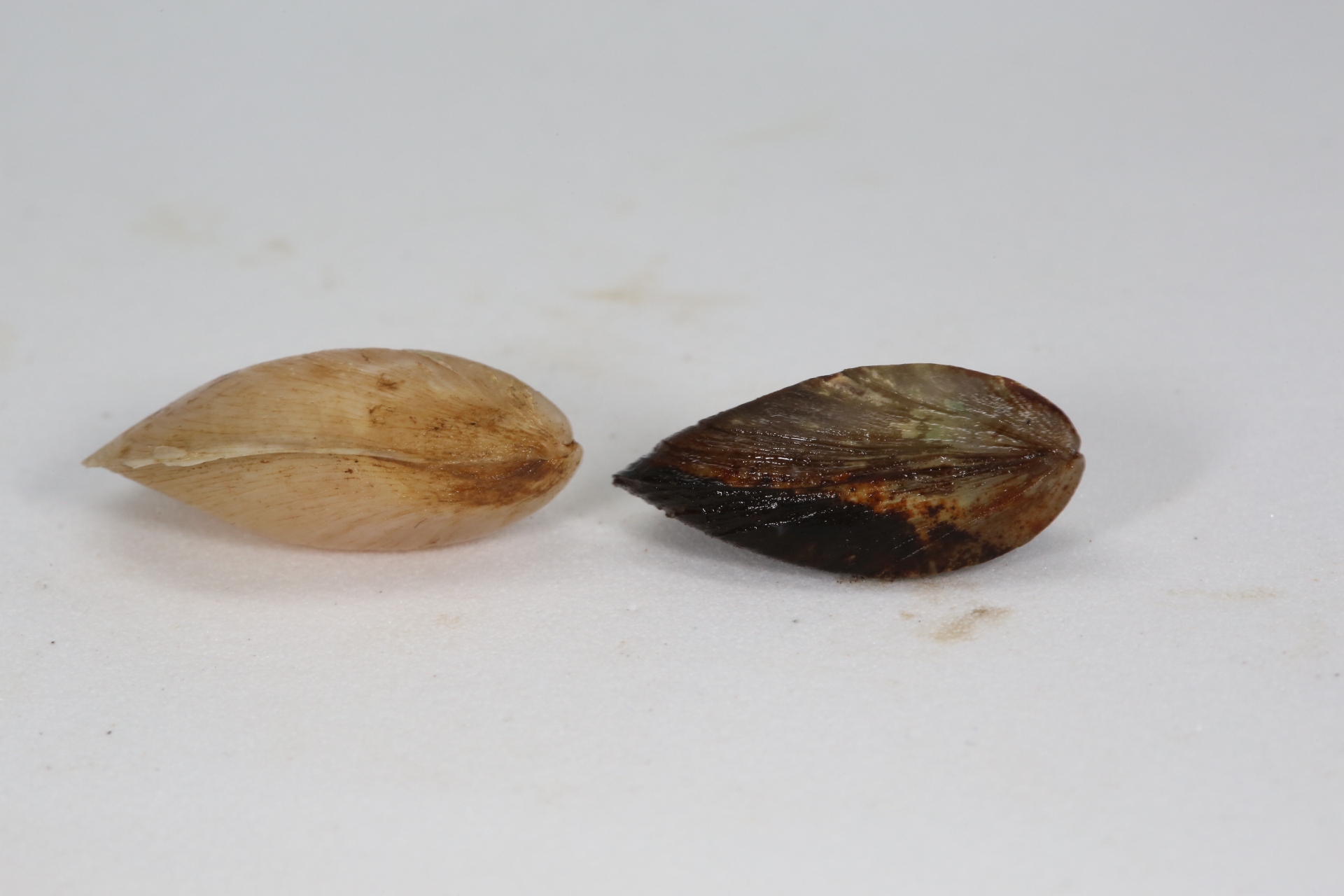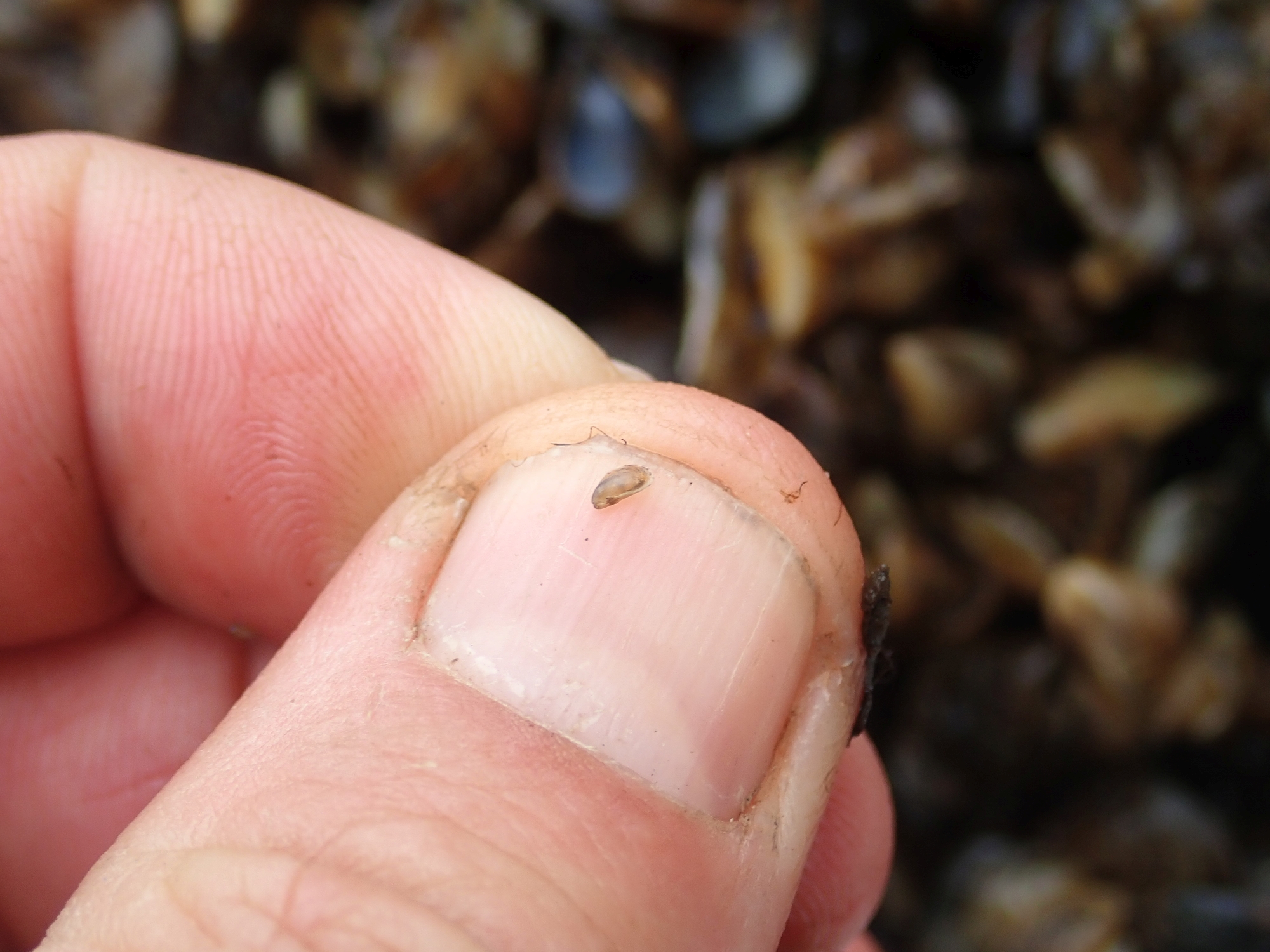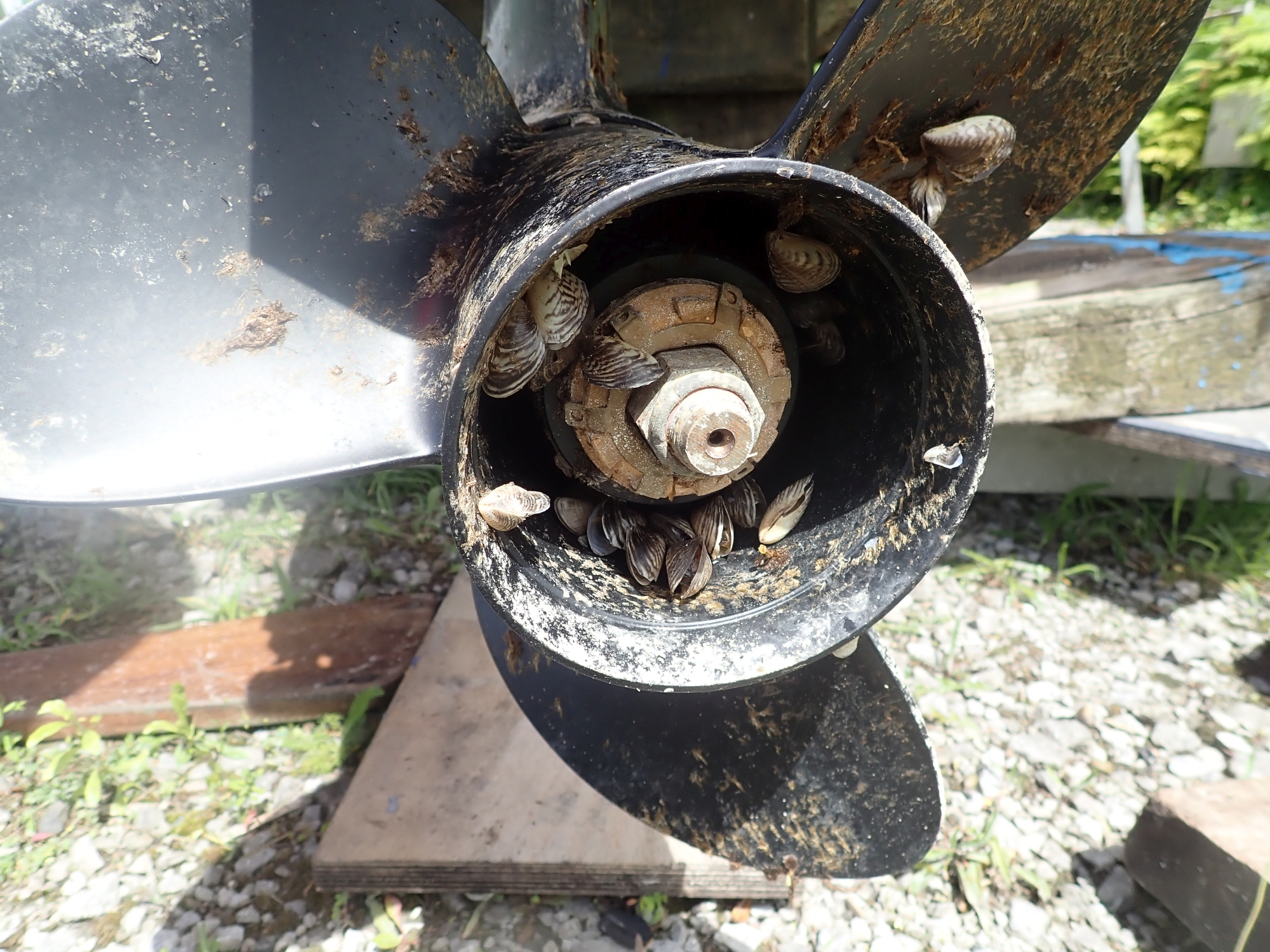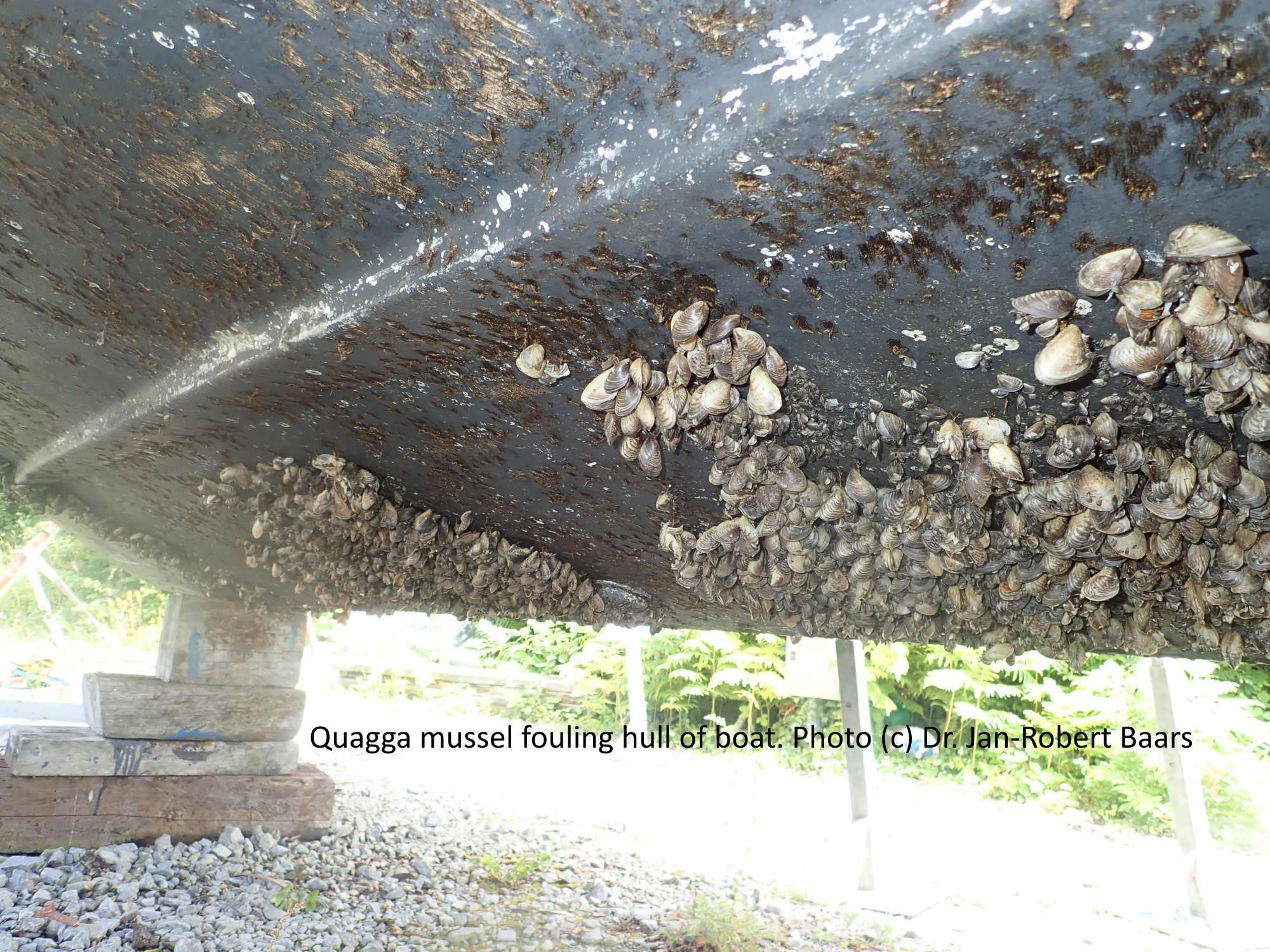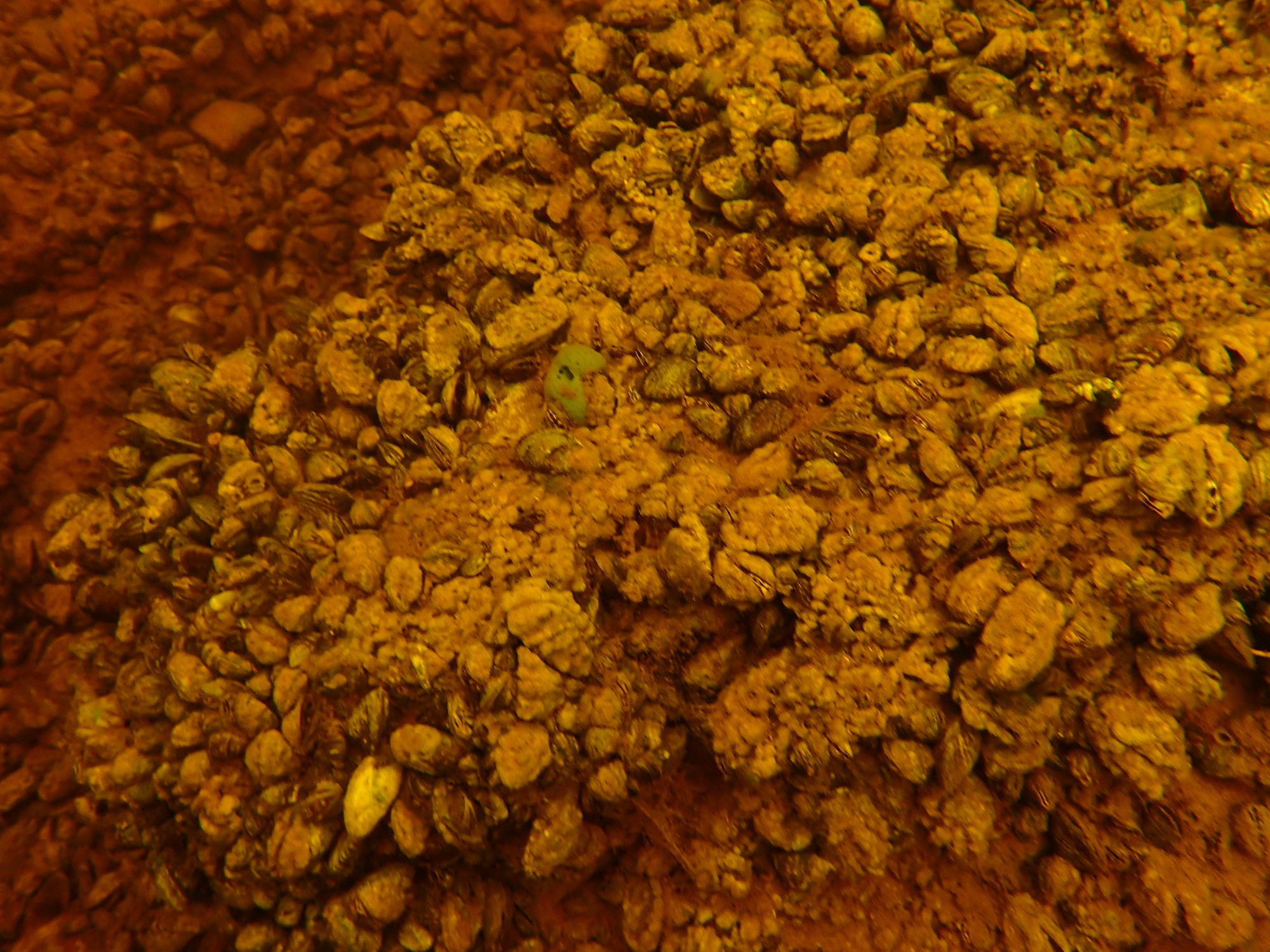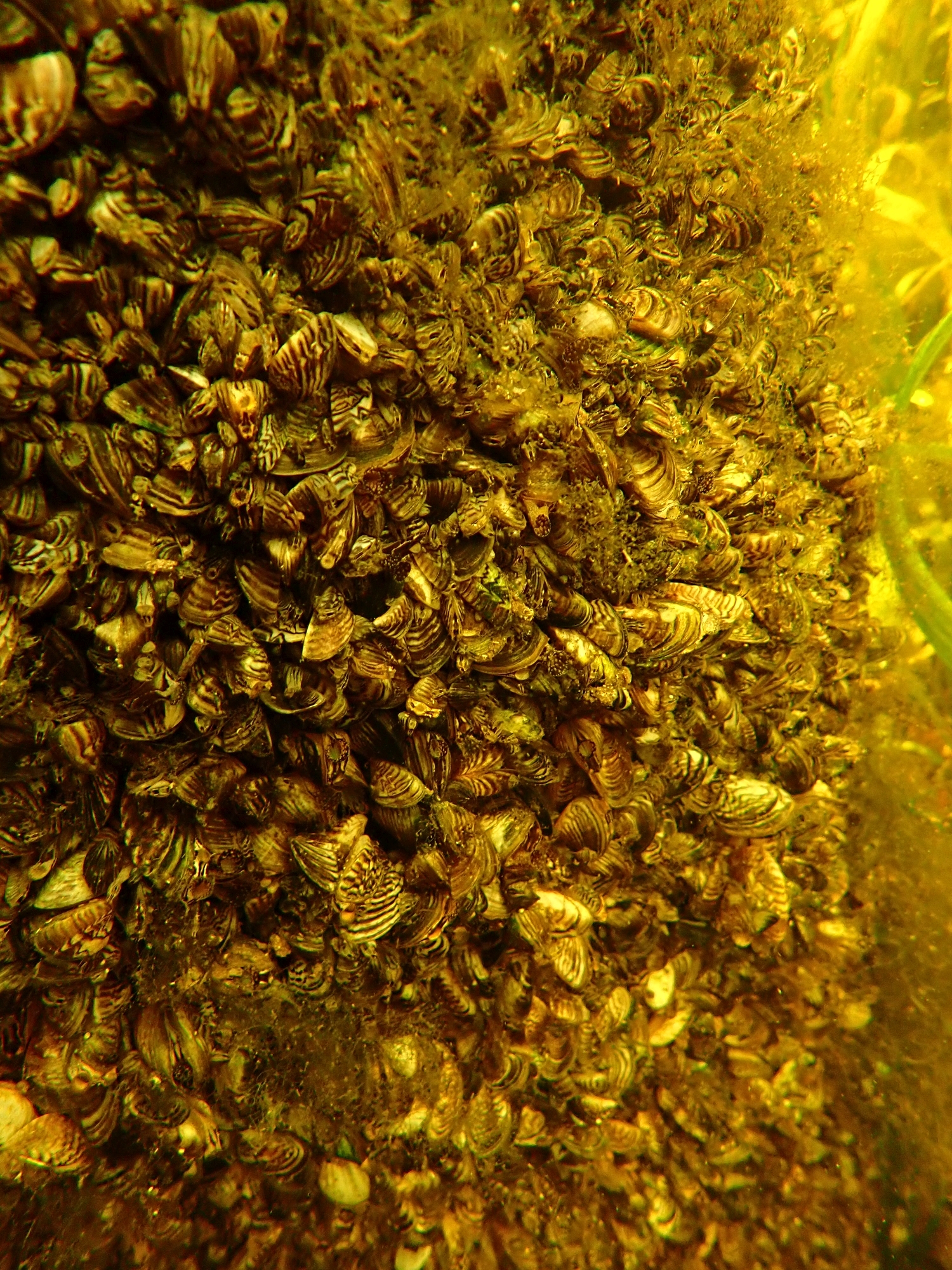Issued by: Dr. Jan-Robert Baars. Invasive Ecology (InEco) Laboratory, and Dr. Dan Minchin, Lough Derg Science Group. See Species alert issued 9th July 2021.
Reason for issue: to notify of the first record of Quagga mussel in Ireland, a potentially high impacting invasive species.
What was seen and when: The quagga mussel has been found in the Shannon’s two great lakes the Ree and Derg, and is currently abundant in Lough Ree over a wide range of depths. They are also present in the Shannon river between these lakes. They were first detected at these sites in early summer, 2021. Surveillance is ongoing at this time – July 2021.
Invasive status: Assessed as having the potential to be a high impact invasive species in Ireland. It is in the Top 10 2017 Horizon scan list of species most likely to arrive, establish and have impact between 2017 and 2027. Quagga mussel is listed on the Third Schedule Part 2 of the European Communities (Birds and Natural Habitats) Regulations 2011 in Ireland.
Summary of potential impacts:
- Quagga mussel is a filter feeder removing planktonic organisms from the water column. It has a high filtration rate likely to result in further changes to water quality and nutrient dynamics of, in particular, lakes.
- The quagga mussel is likely to compete with native mussel species and with the alien invasive zebra mussel (Dreissena polymorpha).
- The presence of the quagga mussel is likely to lead to a further surge in fouling, including of man-made structures in the water, of boats and water craft.
- It may have additional impacts on water quality and the ecological integrity of Irish aquatic ecosystems. In invaded areas, it can significantly reduce native plant, invertebrate and fish populations.
- Having a wide ecological tolerance and suited to Irish climatic conditions, it is expected to become widely distributed in time. It appears to have a preference for cooler water and can settle on finer sediments than the zebra mussel explaining its greater abundance at depth in some colonized lakes elsewhere. It can produce up to 1 million eggs per year.

Identification features:
- It is a bivalve (two shells) of triangular shape and usually less than 5 cm length.
- It commonly has alternating light and dark brown stripes, but can also be solid light brown or dark brown.
- It has two smooth shells that are shaped like the letter “D”.
- In new populations, most mussels are young and therefore very small (under ¼ -inch long).
- Zebra mussel and the quagga mussel are very similar in their appearance. They can sometimes be differentiated by the shape of the shells. However, expert knowledge is needed to distinguish these two species.
- Download N.I.E.A. ID guide
Introduction status: Established populations in Lough Ree, Lough Derg and in the Shannon river between these lakes. Surveillance is ongoing to assess the extent of the infestation in these areas. It is not known to be present in Northern Ireland.
Is there a reference specimen? Yes. Reference specimens and genetic material is kept at University College Dublin and specimens will be lodged with the National Museum of Ireland in Dublin.
Pathway of introduction:
It is unknown how they were introduced into Ireland. Most likely source of introduction is as a contaminant/hitchhiker on boats or equipment brought from infested areas outside of Ireland into Irish waters. This may be as larvae in boat bilge water, in boat engine cooling water, as juveniles or adults attached to hulls of boats, or, as larvae on wet/damp angling gear. Introduction to new areas can also occur through discharge of ballast water from ships.
Vector of spread:
The quagga mussel is likely to be spread by boats to the upper Shannon, and through the Shannon-Erne Waterway to the Erne. It is also likely to be spread overland by trailered craft. Owners of boats should be made aware they could spread this species from the Shannon. See the What should I do? section below. Natural dispersal will occur in the infested waterbody/catchment.
Circumstances of the discovery:
The quagga mussels were detected during a survey of Lough Ree by Dr. Jan-Robert Bars and his research team Heather Swanwick, Oscar Flynn, Kate OLeary and Martina Caplice of the Invasive Ecology (InEco) laboratory, School of Biology and Environmental Science, UCD. Dr. Dan Minchin of the Lough Derg Science Group examined for its presence in Lough Derg. Surveillance work by the aforementioned is ongoing along with data gathering and analysis of the thousands of quagga mussel specimens retrieved.
Management actions taken to date for this 2021 sighting:
- The species has been under a rapid assessment field study managed by the Invasive Ecology (InEco) laboratory, School of Biology and Environmental Science, UCD.
- All recovered specimens from the water are not returned to the water but disposed of responsibly.
- Notification of the sighting detection has been issued to: all agencies with a remit for the aquatic environment in Ireland; the Northern Ireland Environment Agency; the working groups of the recreational boating and recreational angling pathway action plans; and, the eight administrations of the British-Irish Council (BIC) via the Invasive Non-Native Species (INNS) Sub Group.
- The National Biodiversity Data Centre maintains an online reporting function: https://records.biodiversityireland.ie/record/invasives. Enter Dreissena bugensis as the species name, the full scientific name nor the common name Quagga mussel cannot be entered just yet.
Where might I see it?
Quagga mussel occupy lakes, rivers and estuarine habitats. As adults attach to hard substrata, they may also be seen on rocks, native mussel shells, timber, hulls of boats, pipes or other man-made structures in the water. They typically occur in freshwater but can also be found in estuarine areas.
What should I do?
- To help prevent further spread and introduction to new sites, clean all equipment before moving between waterbodies. Follow Check, Clean, Dry, Disinfect protocol.
- Please circulate the one page species alert poster or this web page – especially to those working or undertaking recreational activities in the Shannon catchment.
- Report any suspected sightings with a photograph if possible via this online form https://records.biodiversityireland.ie or through the Biodiversity Data Capture app. Enter species name as Driessena rostriformis.
Additional Resources:
- Invasive Species Ireland species account for Quagga mussel Invasive Species Ireland
- CABI ISC datasheet on Quagga mussel
- Photos of Quagga mussel in Ireland are courtesy of Dr. Jan-Robert Baars
For queries relating to this discovery of Quagga mussel in Ireland:
Dr Jan-Robert Baars of the Invasive Ecology (InEco) laboratory, School of Biology and Environmental Science, UCD. [email protected] or,
Dr Dan Minchin of the Lough Derg Science Group [email protected] examined for its presence in Lough Derg and has been working with J-R Baars on projects on the Shannon since 2016.
For queries or information relating to invasive alien species:
email the NPWS [email protected] and see National Parks & Wildlife Service (npws.ie)
or email [email protected]


